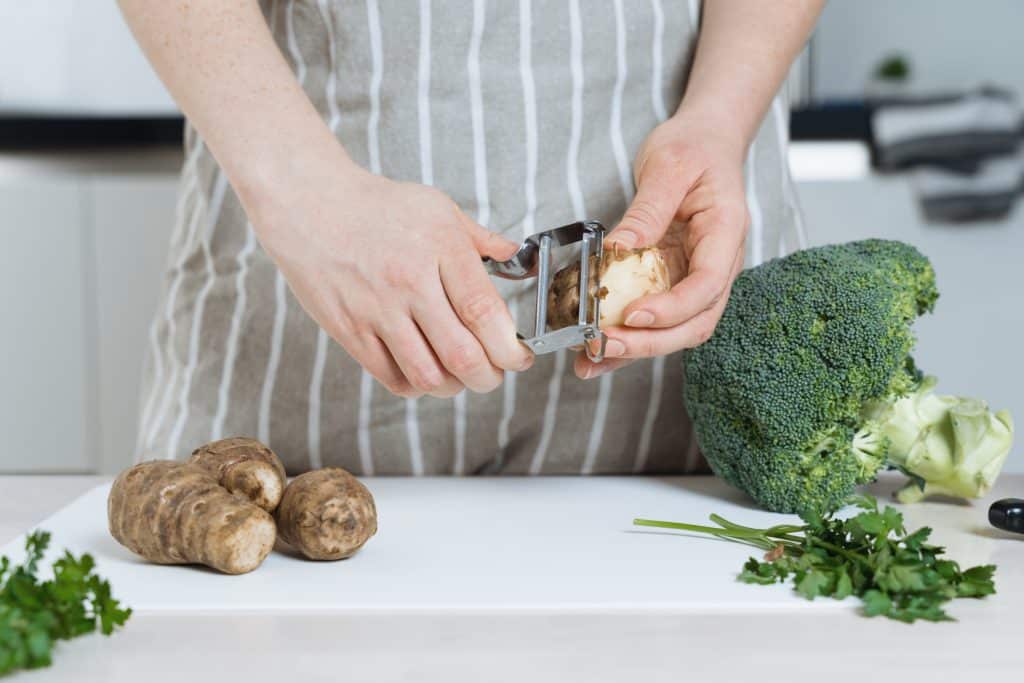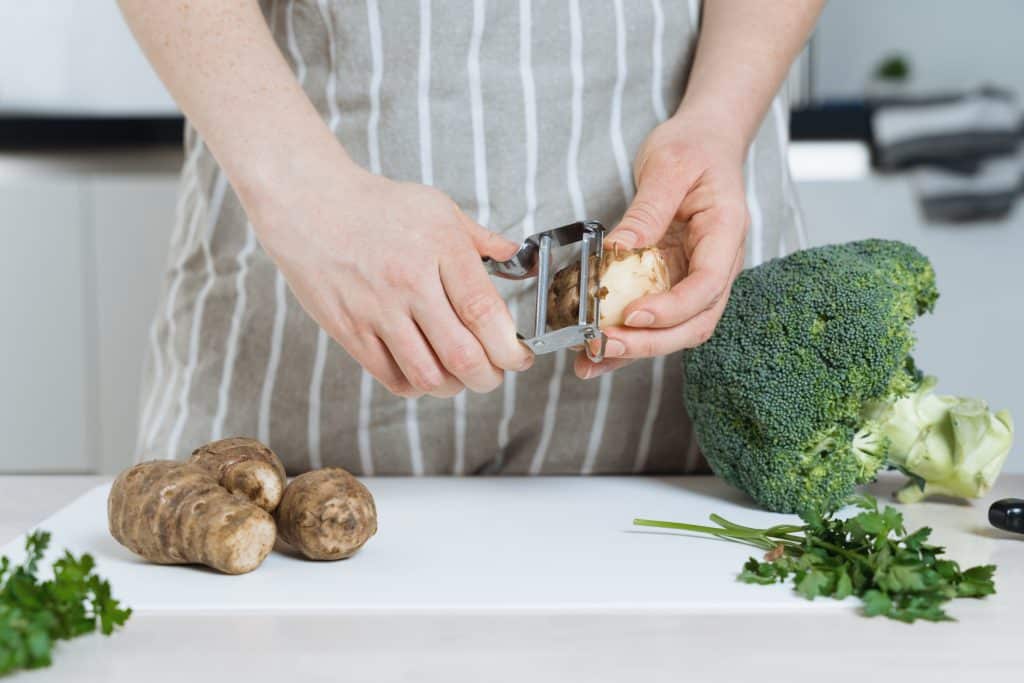Jerusalem artichokes, often referred to as “artichokes from Jerusalem,” are tubers increasingly favored in our meals due to their mild flavor and nutritional richness. However, a common question arises when preparing to cook them: should you peel their skin, or can it be consumed? In this article, let’s explore together the advantages and disadvantages of eating the skin of Jerusalem artichokes, as well as the best ways to prepare them to make the most of their benefits.
A Nutritional Treasure Under the Skin
Jerusalem artichokes are very interesting nutritionally. They are rich in fiber, vitamins (notably vitamin B1), and minerals such as iron, potassium, and magnesium. What makes them unique is their content of inulin, a natural prebiotic that promotes good intestinal health.
What many don’t realize is that the skin of Jerusalem artichokes contains a significant portion of these nutrients. Consuming it allows you to maximize health benefits. The fiber present in the skin aids in better digestion and helps regulate intestinal transit.
Furthermore, leaving the skin intact during cooking helps preserve the flavors and prevents the tuber from drying out or becoming too mushy quickly. Thus, opting to eat the skin can be a practical and environmentally friendly choice.
A Matter of Hygiene and Texture
While consuming the skin of Jerusalem artichokes has advantages, some precautions must be taken. Like many root vegetables, these tubers grow in the soil. Their skin may, therefore, contain soil residues, pesticides, or other impurities. Before consuming them with their skin, it is essential to wash them thoroughly.
To do this, use a vegetable brush under running water to remove all traces of dirt. Some also prefer to soak them in a solution of water and white vinegar for more effective cleaning.
Another important point: the texture of the skin of Jerusalem artichokes may bother some consumers. It is quite thin but can be somewhat rough, which might be an issue for those who prefer smoother textures. This is largely a matter of personal preference and the type of recipe being prepared.
How Does It Affect the Taste?
The skin of Jerusalem artichokes has a subtle, slightly earthy flavor that complements the sweetness of the flesh quite well. However, when left on the tuber, it can influence the overall texture of the dish, especially if the artichokes are baked or pureed.
The Ecological and Practical Benefits
Peeling Jerusalem artichokes can be tedious. Their irregular shape and numerous little bumps make this task complicated and time-consuming. Leaving the skin on is a practical and economical solution.
Moreover, it helps reduce food waste. Each peel represents a loss, both in terms of nutrients and consumable amounts. By adopting a more ecological approach, you optimize the use of this tuber and contribute to a more sustainable diet.
How To Cook Jerusalem Artichokes with Their Skin?
If you decide to keep the skin, certain cooking techniques allow you to fully appreciate it. Roasting in the oven is an excellent option. After washing the Jerusalem artichokes, cut them into slices or pieces, add a drizzle of olive oil, herbs, and spices, then bake until golden and crispy. The skin then becomes nearly invisible and blends into a pleasant texture.
You can also steam them or sauté them in a pan with a bit of butter or oil. Gentle cooking softens the skin, making it less perceptible in the mouth.
What Are the Risks of Eating the Skin?
In the vast majority of cases, eating the skin of Jerusalem artichokes is safe. However, it’s essential to be cautious if you have digestive issues or a sensitive gut. The fiber present in the skin, combined with the inulin found in the tuber, may cause bloating or gas in some individuals.
To minimize these effects, start with small portions and observe how your body reacts. If you prefer to limit risks, peeling the Jerusalem artichoke remains a perfectly acceptable option.
So, To Peel or Not to Peel?
The decision to eat the skin of Jerusalem artichokes ultimately depends on your personal preferences, culinary habits, and digestive tolerances. Consuming them with their skin maximizes nutritional intake while simplifying preparation. However, for recipes that require a smooth texture or if you prefer a milder flavor, peeling remains a valid option.
In the end, regardless of your choice, Jerusalem artichokes are a great ally in a varied and balanced diet. Therefore, whether with or without skin, they deserve a prominent place in your kitchen!


